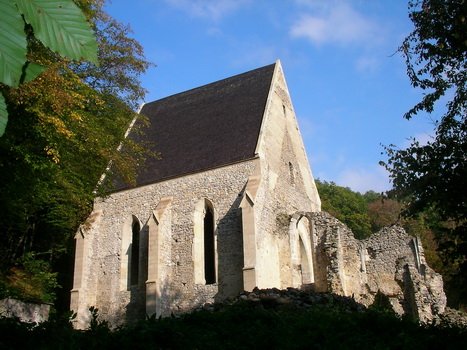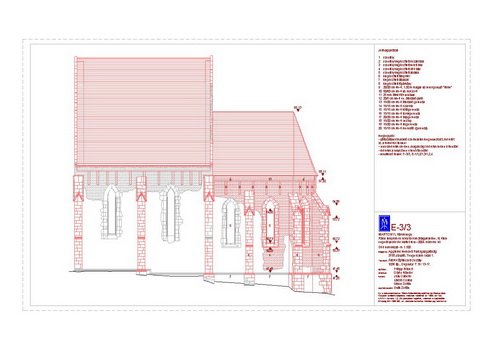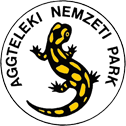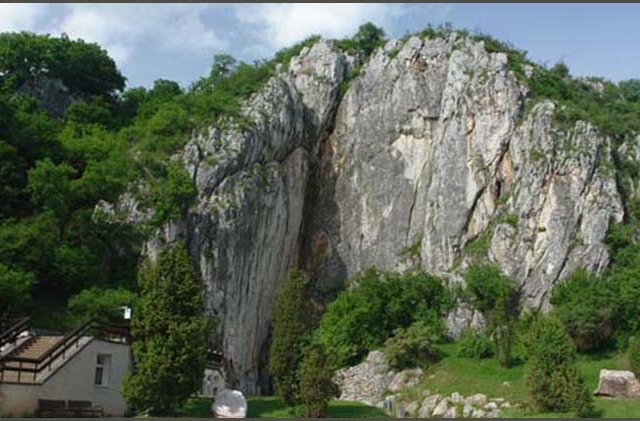14th Century Háromhegyi Pálos Church and Monastery Ruins
(in the village of Martonyi)

The village of Martonyi is located in the Szalonna-Rudabánya Hills in the southern part of Aggtelek National Park. The church and monastery ruins (1341) are 3.5 km from the village proper and can be reached via a paved road leading towards the TV tower.
Within the territory of Aggtelek National Park, and with the exception of
Szádvár, this is the most significant medieval building, and a monument of national importance.
Through the intercession of Cardinal Gentilis in 1308,
Pope Clement V confirmed the establishment the first
Pauline order in Hungary. Many Pauline monasteries were later established around the country. For example, there is another one near Miskolc in the Bükk Hills, and the one across the current border in
Gombaszög, Slovakia. The order presently has its headquarters in Czestochova, Poland.
A Short History of the Monastery:
The Past
The
Te kus (Thekus) Family
kus (Thekus) Family constructed the monastery in 1341. It became part of István Szalonna’s estate in 1399. Auxiliary Bishop John Eger consecrated the three altars in honour of the Blessed Virgin in 1411.
Decreased support from local nobles as well as depopulation of the area due to
Turkish raids sealed the fate of the monastery in 1550.
Present and Future
The Háromhegyi Pálos Church and Monastery is the best preserved Pauline edifice remaining in Hungary. The church nave and side gables are still standing. Most importantly, it is architecturally sound for reconstruction. Those who have visited the monument in earlier times will be surprised that the 140-150 year-old, 18-20 meter tall beech trees growing in the middle of the church have been removed.
The historic building came under the jurisdiction of the Hungarian State and Aggtelek National Park at the end of 1997. The fate of the building at this point took a turn for the better, and in 2001 overall reconstruction work began to save this important monument.
All possible means are being used to ensure that the monastery survives true to its original form and spirit. Archaeologists brought the remains of carved stones to the surface that were later integrated into the renovation process. The full archaeological report is available here in Hungarian. Preservation of the building will contribute another local

attraction and increase tourism to this economically-challenged region.
The exterior reconstruction of the nave has been completed (ElixBau Kft., Miskolc). The gables, roofing shingles and buttresses have been stabilised. Plans for the complete reconstruction of the church sanctuary have been finalised.
The monastery’s living areas were excavated by ÁMRK (State Monument Recovery and Restoration Centre) staff Zoltán Simon, Juan Cabello, and Csaba László in 2005.
The next 3 phases of reconstruction, based on plans by Róbert Fülöpp, will focus on the sanctuary walls, roof, vaulted ceilings, and archaeological excavation of the monastery.
The construction site is dangerous, and therefore, the inside of the sanctuary is currently off limits to visitors for their own safety.
More information about the Pauline Order in Hungary is available
here.
 kus (Thekus) Family constructed the monastery in 1341. It became part of István Szalonna’s estate in 1399. Auxiliary Bishop John Eger consecrated the three altars in honour of the Blessed Virgin in 1411.
kus (Thekus) Family constructed the monastery in 1341. It became part of István Szalonna’s estate in 1399. Auxiliary Bishop John Eger consecrated the three altars in honour of the Blessed Virgin in 1411.


